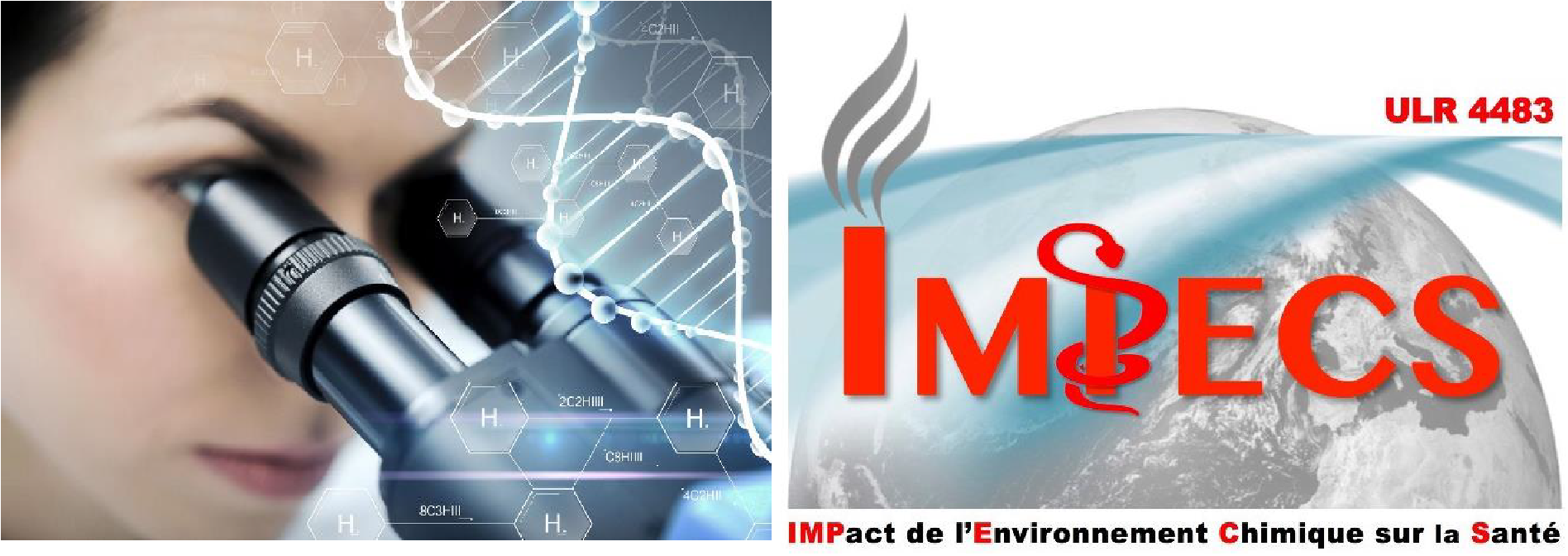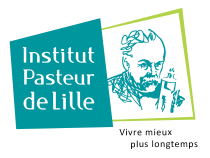Laboratory of genetic toxicology
Institut Pasteur de Lille
Head of Laboratory: Sophie Simar, PhD

Presentation
The Genetic Toxicology Laboratory of Institut Pasteur de Lille is part of the ULR 4483-IMPECS (IMPact of the Chemical Environment on Health) labelled research unit at the University of Lille, whose scientific programme is based on a multidisciplinary approach focusing on the impact of airborne contaminants (fine and ultrafine particles, cigarette smoke, welding fumes, fire smoke, etc.) on human health. Using in vitro and in vivo models, the work of the Genetic Toxicology Laboratory consists of analysing the genotoxic and mutagenic pre-cancerous mechanisms of action of aerocontaminants in the lungs.
As genetic toxicology is a cross-disciplinary science, the Genetic Toxicology Laboratory of Institut Pasteur de Lille is also involved in a number of other projects on various public health issues, generating results that are essential for assessing health risks.
Projects
 Study of the effects of mixtures of potentially Endocrine Disrupting substances
Study of the effects of mixtures of potentially Endocrine Disrupting substances
Our goal is to investigate the effects of mixtures of contaminants that are potential Endocrine Disrupting (ED) substances and representative of dietary exposure in France. We seek to identify the main mixtures of potential ED substances to which French people are exposed according to different types of diet in the infant and adult populations. We carry out in vitro tests providing data on main mechanisms and pathways of endocrine activity, in particular the binding affinity and activation of estrogen and androgen receptors, steroidogenesis, as well as tests for thyroid disruption.
Funding: ANSES. APR EST 2019
 Developing new models
Developing new models
This project aims at validating an innovative 3D model of human hepatocytes for the analysis of genotoxicity related to chemical-induced human hepatocarcinogenesis. The objective is to implement in vitro models of 3D hepatocyte spheroid cultures and to compare these in vitro results with those obtained in standard in vivo genotoxicity tests in order to eventually replace the animal model.
Funding: Inserm. Plan Cancer 2014-2019. ITMO Cancer d’Aviesan. Funding Call – « New Experimental Models » 2019.
 PACKSAFE Project: Integrated chemical safety assessment of food contact articles.
PACKSAFE Project: Integrated chemical safety assessment of food contact articles.
Food packaging is a source of chemical contamination of food due to the migration of substances, sometimes toxic, intentionally (compounds used in the basic formulation of the packaging) or unintentionally added (degradation products, impurities, etc.). In this context, the PACKSAFE project, funded by the ANR andcoordinated by Prof Marie-Christine Chagnon (AgroSup Dijon), aims to develop a multidisciplinary approach (physics, chemistry, toxicology, chemometrics) to guarantee the safety of finished packaging (paper-cartons, plastics) and thus guarantee the health of consumers.
 SOFTGLUE Project: A painless ‘glue’ closure for tissues.
SOFTGLUE Project: A painless ‘glue’ closure for tissues.
Pain is now the most common reason patients see a doctor. After surgery, it is considered one of the most distressing symptoms, and poor tissue adhesion causes irritation and tension that are a source of additional pain. In such cases, painkillers are administered to relieve pain, but their action lasts only a few hours. In this context, the SOFTGLUE project, coordinated by Dr Ruxandra Gref (Université Paris-Saclay, Orsay), aims to develop a non-toxic ‘flexible glue’ to suture skin and liver wounds without mechanical stress (i.e. without stiffness) while allowing for an analgesic effect over a long period. This project, funded by the ANR, is carried out in partnership with Priscille Brodin (CIIL).
 Projetc on the assessment of the carcinogenic potential of heated tobacco emissions.
Projetc on the assessment of the carcinogenic potential of heated tobacco emissions.
Tobacco consumption is a major public health problem, causing 8 million deaths every year worldwide. Smoking cessation is currently the only effective way of slowing the progression of tobacco-related cancers. In recent years, new nicotine delivery devices have appeared on the market and rapidly gained in popularity even before there was sufficient scientific evidence that they were safe for users. This is the case with electronic cigarettes (e-cigarettes) and heated tobacco systems (HTP), which are said to be less harmful than cigarettes due to the absence of tobacco combustion. However, most toxicological analyses of heated tobacco have been carried out by the tobacco industry itself. Consequently, the authorities urgently need additional independent scientific investigations into the potential toxicity of heated tobacco so that they can regulate these products in the future. The aim of our project, funded by the INCA, in collaboration with Philippe Gosset’s team (CIIL), is to assess the carcinogenic potential of heated tobacco emissions using two approaches: (i) an in vivo carcinogenesis study in a mouse model with repeated exposure to heated tobacco, and (ii) an in vitro study in human lung cells in order to gain a better understanding of the cellular and molecular mechanisms involved in the carcinogenesis processes linked to new tobacco products. This project should provide relevant and independent information on the carcinogenic potential of heated tobacco emissions and thus contribute to a better assessment of the risks of these new tobacco products by health agencies.
 OZONO-TOX project: Comparison of the toxicity of fire smoke residues on firefighters’ protective clothing, before and after decontamination by ozonolysis.
OZONO-TOX project: Comparison of the toxicity of fire smoke residues on firefighters’ protective clothing, before and after decontamination by ozonolysis.
As part of their fire-fighting activities, fire-fighters are exposed directly to fire smoke during extinguishing operations or indirectly to smoke residues on their personal protective equipment (PPE). Decontamination of their PPE remains a major source of concern. Ozone (O3) cabinets have recently been incorporated into decontamination protocols as an alternative to conventional washing. However, no study has yet assessed the toxicity of the oxidation products formed, such as oxygenated and nitrated derivatives of Polycyclic Aromatic Hydrocarbons (PAHs). The aim of this study, funded by ANSES, is to compare (1) the chemical composition of PAHs and their derivatives (i.e., oxy- and nitro-PHAs) and the oxidative potential of combustion residues on fire jackets, before and after ozonolysis, and (2) to assess their toxicity in terms of mutagenicity/genotoxicity, oxidative stress, inflammatory response and alteration of critical signalling pathways in in vitro models of human lung and skin epithelia.
Members
Anne PLATEL, PhD
Lecturer, Head of Research & Development
Publications
Hayrapetyan R, Cariou R, Platel A, Santos J, Huot L, Monneraye V, Chagnon MC, Séverin I.
Identification of non-volatile non-intentionally added substances from polyester food contact coatings and genotoxicity assessment of polyester coating’s migrates.
Food Chem Toxicol. 2024 Mar ;185:114484. doi: 10.1016/j.fct.2024.114484. Epub 2024 Jan 26.
PMID: 38280474
Dervilly G, Bourdeau M, Pruvost-Couvreur M, Severin I, Platel A, Chagnon MC, Nesslany F, Le Bizec B, Moche H.
Cocktails of endocrine disruptors in the different diets of French consumers.
Environ Int. 2024 Jan;183:108408. doi: 10.1016/j.envint.2023.108408. Epub 2024 Jan 9.
PMID: 38219538
.
Zarcone G, Lenski M, Martinez T, Talahari S, Simonin O, Garçon G, Allorge D, Nesslany F, Lo-Guidice JM, Platel A, Anthérieu S.
Impact of Electronic Cigarettes, Heated Tobacco Products and Conventional Cigarettes on the Generation of Oxidative Stress and Genetic and Epigenetic Lesions in Human Bronchial Epithelial BEAS-2B Cells.
Toxics. 2023 Oct 10;11(10):847. doi: 10.3390/toxics11100847.
PMID: 37888697
Barbier E, Carpentier J, Simonin O, Gosset P, Platel A, Happillon M, Alleman LY, Perdrix E, Riffault V, Chassat T, Lo Guidice JM, Anthérieu S, Garçon G.
Oxidative stress and inflammation induced by air pollution-derived PM2.5 persist in the lungs of mice after cessation of their sub-chronic exposure.
Environ Int. 2023 Nov;181:108248. doi: 10.1016/j.envint.2023.108248. Epub 2023 Oct 12.
PMID: 37857188
Platel A, Dusautoir R, Kervoaze G, Dourdin G, Gateau E, Talahari S, Huot L, Simar S, Ollivier A, Laine W, Kluza J, Gosset P, Garçon G, Anthérieu S, Guidice JL, Nesslany F.
Comparison of the in vivo genotoxicity of electronic and conventional cigarettes aerosols after subacute, subchronic and chronic exposures.
J Hazard Mater. 2022 Feb 5;423(Pt B):127246. doi: 10.1016/j.jhazmat.2021.127246. Epub 2021 Sep 20.
PMID: 34844363
Keywords
Team contact
Anne PLATEL, PhD
Assistant Professor, Head of Research & Development
anne.platel@pasteur-lille.fr
+ (or 00) 3 20 87 79 01
